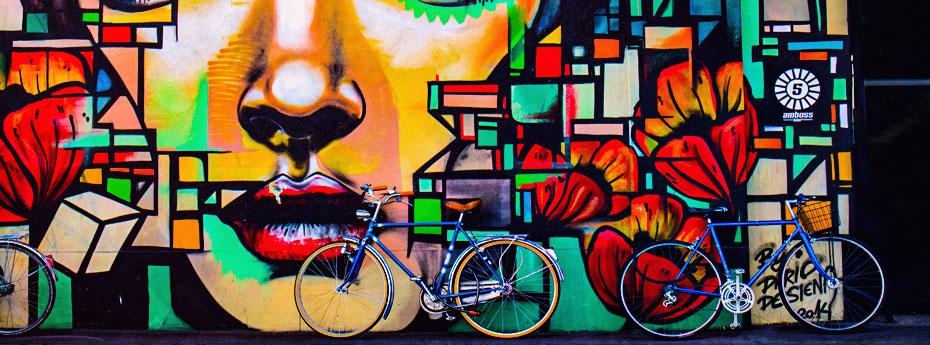
The history of art counts more than one millennium – people of ancient civilizations used the methods available to depict the different objects and the world around them. Since then, much time has passed, and today we can define the work of certain people in artistic directions, each of which had features that reflect the social and personal characteristics of people of that period when they emerged. The first outstanding works of visual art belong to the Renaissance artists (Botticelli, Leonardo da Vinci, Michelangelo, Raphael), and up to our era, many artists have left their contribution to the history of art.
Many contemporary artists give vent to their talent in various forms, including installations, graphic series, art objects, and sculptures. In their artwork, they may use references to the art of the past, so understanding many contemporary paintings requires knowing the context and characteristics of each period in the history of art. We will return to the artistic directions that existed at the beginning of the modern era of drawing and art in general and pay attention to their characteristics and outstanding representatives.
Major Branches of the History of Contemporary Art
Researchers believe that the beginning of modern art, which continues today, can be considered the 1970s. While some stages in the visual arts continued for more than one decade, there are various schools and individual movements in contemporary art.

Postmodernism quickly replaced modernism and is the opposite of this rather unusual period in all spheres of creativity. At the time, modernism rejected classical, academic art and turned to new artistic forms. However, after many years, it became a classic itself. Thus, postmodernists started creating works that reflected skepticism, irony and philosophical criticism. The forms of creativity have received a playful or even sarcastic form. At the same time, its main feature was the unification of styles of figurative motives and techniques borrowed from the arsenal of different eras, regions, and subcultures. Postmodernism differs significantly from modernism in that it has classical and traditional motives and notes, as well as a revision of traditional views. The most famous representatives of postmodernism are Justin Michael Jenkins, Robert Rauschenberg, Johanna Drucker.
Feminist Art. The movement emerged to change stereotypes and the model of art history dominated by male artists. It is an art category associated with the feminist movement of the late 1960s and 1970s. Feminist art highlights the social and political differences women face in their lives. The means of art feminism used range from traditional art forms such as painting to more recent techniques such as performance art, conceptual art, body art, creativity, video, cinema. Feminist art has served as an innovative driving force in expanding the definition of art. Most famous representatives: Mary Beth Edelson, Judy Chicago, Miriam Schapiro, Lynda Benglis.
Neo-expressionism. This movement arose from the desire to revive the original aspects of Expressionism and create modern textural, expressive, large-scale works. This painting style is characterized by the extreme subjectivity of the embodiment of images, the use of raw materials, and a vivid color palette. Neo-expressionism rejected the intellectual, sophisticated approach to art inherent in postmodernism. Neo-expressionists turned to express genuine emotions, ideas, and feelings without regard to aesthetics. Neo-expressionism has become one of the most unusual, controversial, and multifaceted trends in modern painting. Famous neo-expressionist artists: Jean-Michel Basquiat, Anselm Kiefer, Georg Baselitz, Markus Lüpertz.
Street Art. It is believed that the street artists movement originated in the 1970s in the United States. It all started with graffiti drawings in public places, on sidewalks, buildings, and tunnels. The technique in which the street art pioneers worked was called writing, after which they began to use bombing – very fast drawing in extreme conditions, as well as tagging – the image of the artist’s nickname.

Today, 3D optical illusions are very popular and arouse the greatest interest among citizens and tourists for their virtuosity and interesting ideas. An unusual technique of reverse graffiti is performed on dirty surfaces, which the artist partially washed away by applying his drawing. Using appropriation and stylization strategies in their practice, they explored the relationship between art, popular culture, and society. Famous representatives – Cindy Sherman, Louise Lawler, Gary Simmons.
The Pictures Generation. Under the influence of conceptual and pop art, artists were united by a critical attitude towards such fundamental concepts for contemporary art as originality and authenticity. Any image began to be perceived as a picture, the content of which could be borrowed from both classical art and folk culture and mass media. Using strategies of appropriation and stylization in their practice, they explored the relationship between art, popular culture and society. Popular representatives – Cindy Sherman, Louise Lawler, Gary Simmons.
Digital art. Digital art is recognized all over the world. In the second decade of the 21st century, there was a wave of the opening of museums and galleries of digital art across all countries. The development of this movement, at the heart of which artists combine art and technology, was facilitated by the emergence of a digital camera, computers, audio and visual software. It is still difficult to talk about the most famous and talented representatives of the modern digital era because the possibilities for creation are almost endless.
As you can see, by looking at the very recent history of art, you can determine which artistic styles and techniques are influencing art today. The creative direction changes depending on the aesthetic ideals and worldview of people. We can only enjoy what is being created around us today and expect new trends in art.





